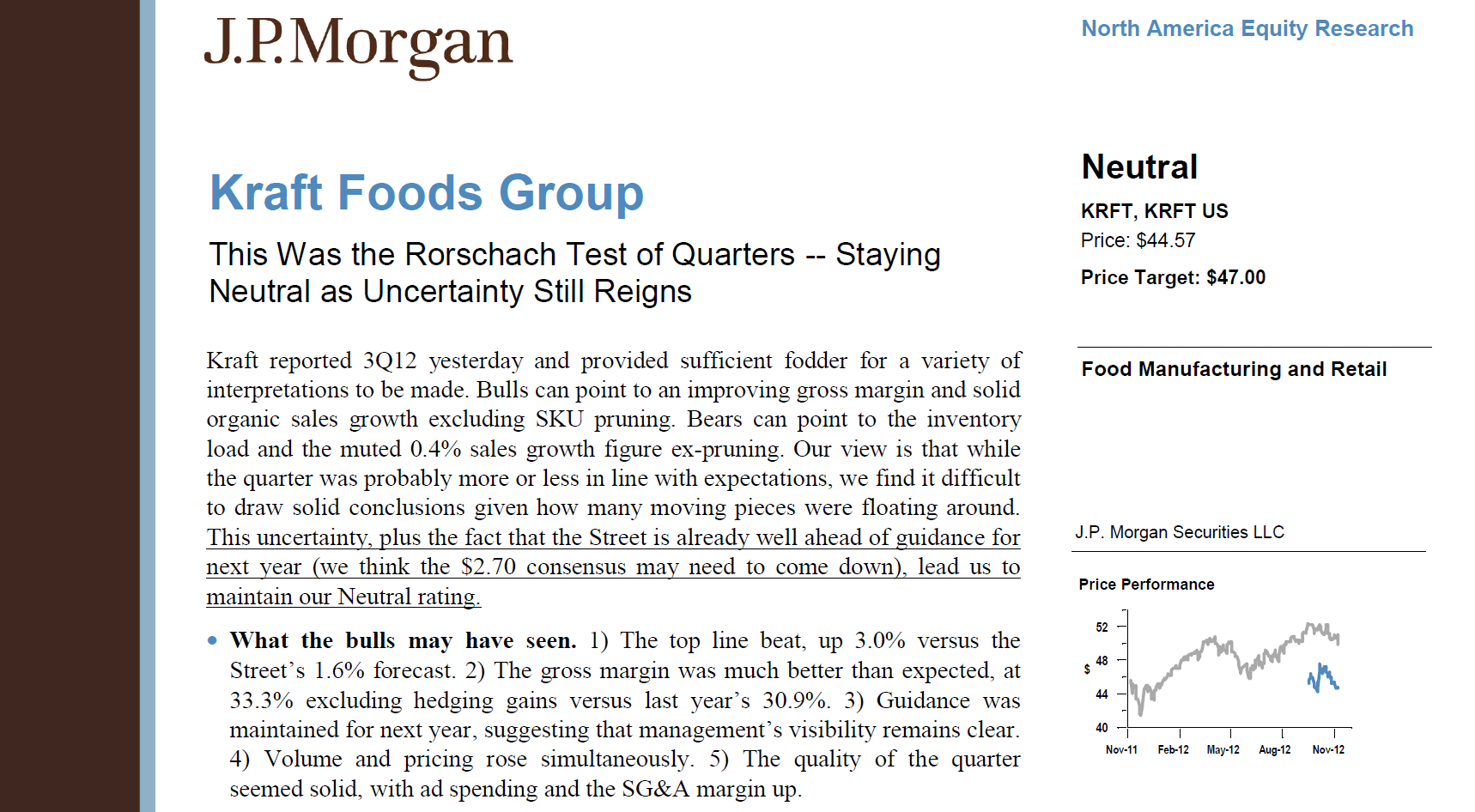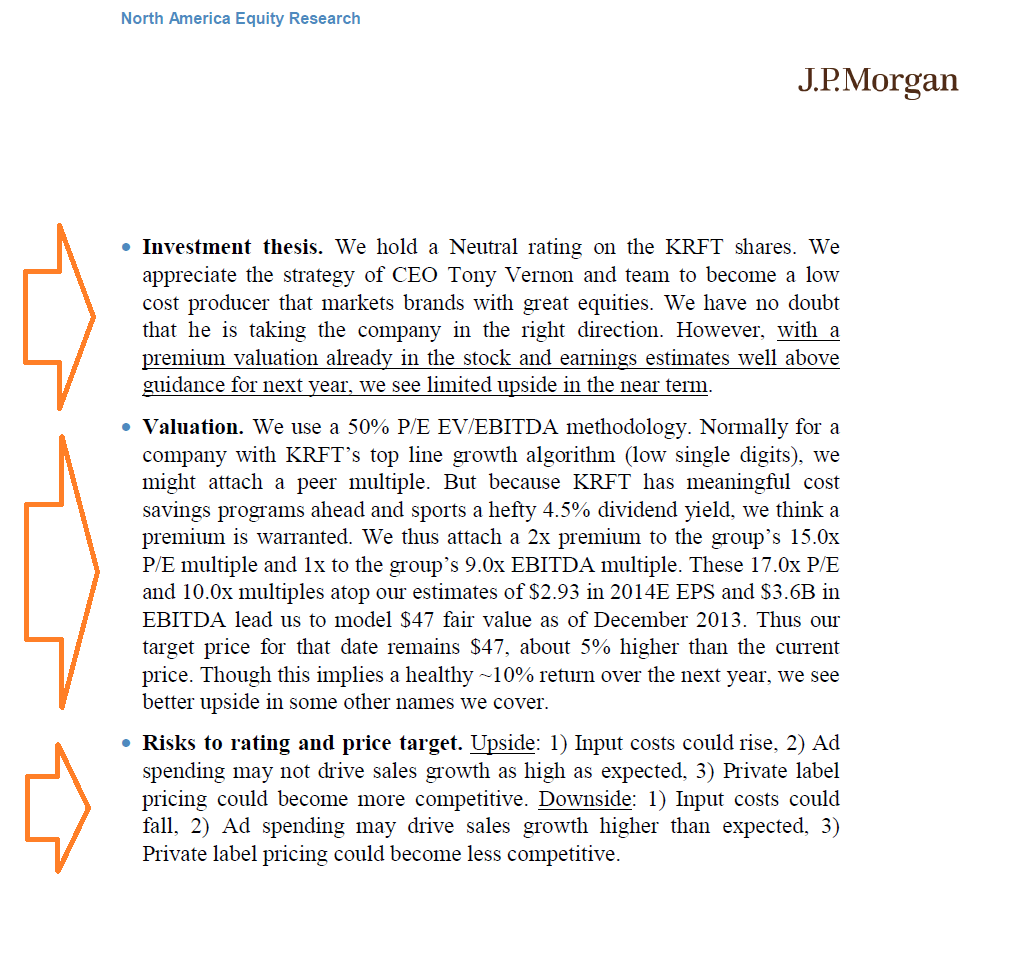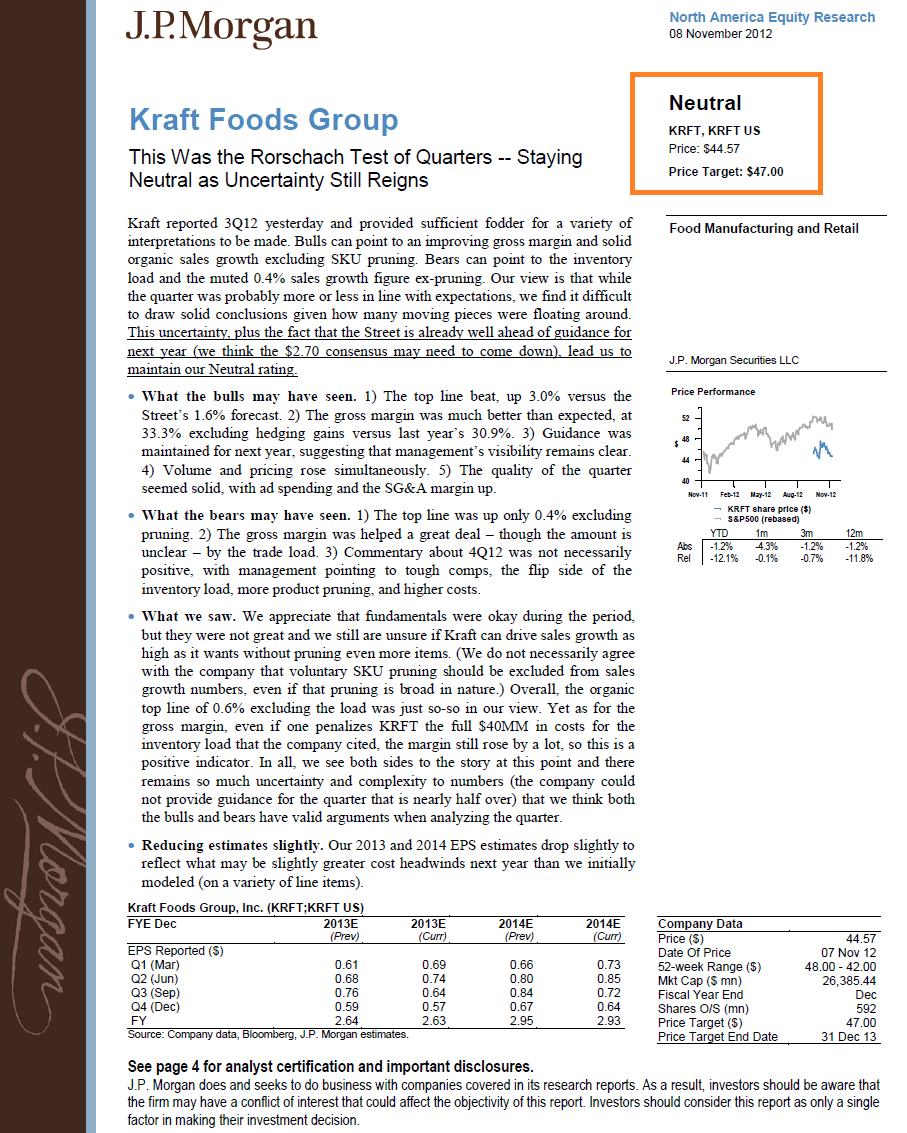Equity Research Report
A recommendation to buy, sell, or hold shares of a public company
What is an Equity Research Report?
An equity research report is a document prepared by an Analyst that provides a recommendation on whether investors should buy, hold, or sell shares of a public company. Additionally, it provides an overview of the business, the industry it operates in, the management team, its financial performance, risks, and the target price.

To learn more, check out CFI’s Valuation Modeling Classes.
Contents of an Equity Research Report
Let’s take a closer look at what’s included in an equity research report. Below is a list of the main sections you’ll find in one of these reports.
Contents:
- Recommendation – Typically to either buy, sell, or hold shares in the company. This section also usually includes a target price (i.e., $47.00 in the next 12 months).
- Company Update – Any recent information, new releases, quarterly or annual results, major contracts, management changes, or any other important information about the company.
- Investment Thesis – A summary of why the analyst believes the stock will over or underperform and what will cause it to reach the share price target included in the recommendation. This is probably the most interesting part of the report.
- Financial Information & Valuation – A forecast of the company’s income statement, balance sheet, cash flow, and valuation. This section is often an output from a financial model built in Excel.
- Risk & Disclaimers – An overview of the risks associated with investing in the stock. This is usually a laundry list that includes all conceivable risks, thus making it feel like a legal disclaimer. The reports also have extensive disclaimers in addition to the risk section.

Buy Side vs Sell Side Research
It’s important to distinguish between buy side and sell side research reports.
Buy side firms (asset management companies) have their own internal research teams that produce reports and recommendations on which stocks the firm and its portfolio managers should buy and sell. The reports are only used for internal investment decision making and not distributed publicly.
Sell side firms such as investment banks produce equity research reports to be disseminated to their sales and trading clients and wealth management clients. These reports are distributed for free for a variety of reasons (explained below) and have a specific recommendation to buy, sell, or hold as well as an expected target price.
Learn more about buy side vs sell side jobs.
Why Do Banks Publish Equity Research Reports?
The sell side publishes reports to generate fees, both directly and indirectly.
Direct: Trading Commissions
When an investment bank publishes valuable equity research for an institutional client, that client is then likely to use the bank to execute their trades for that stock. While there no actual agreement to do so, it’s an unspoken rule. The bank may also use the report to persuade the client to buy more shares in a holding they already have, to therefor further increase commissions.
Indirect: Investment Banking Relationships
All banks have a Chinese Wall between their investment banking teams and research departments, but there still remains an indirect incentive for research to be supportive of stocks the bank may provide investment banking services to. The fees that investment bankers earn on underwriting and mergers and acquisitions (M&A) are huge, and a bank would never want to miss out an opportunity to work with a CEO of a public company because the bank had a “Sell” rating on their stock.
For this reason, sell side research typically includes a disclaimer along the lines of, “Bank X seeks and does business with companies that are covered in its research reports. Because of this, investors should be aware that the firm may have a conflict of interest (due to these investment banking relationships) that could affect the objectivity of this report. Investors should consider this report as only a single factor in making their investment decision.”
Equity Research Report Recommendations
Each bank has their own set of recommendations (terms) they use to rate a stock. Below is a list of the most common recommendations or rating analysts issue.
Ratings include:
- Buy, Outperform, Overweight
- Hold, Neutral, Marketweight
- Sell, Underperform, Underweight
To learn more, check out CFI’s Valuation Modeling Courses.
Different Types of Reports
This guide has focused on a “typical” equity research report, but there are various other types that can take slightly different forms. Below is a list of other types.
Types of reports:
- Initiating Coverage – A long report (often 50-100+ pages long) that is released when a firm starts covering a stock for the first time.
- Industry Reports – General industry updates about a few companies in a sector.
- Top Picks – A list and summary of a firm’s top stock picks and their targeted returns.
- Quarterly Results – A report that focuses on the company’s quarterly earnings release and any updated guidance.
- Flash Reports – Quick 1-2 page report that comments on a new release from the company or other quick information.
Equity Research Report Example
Below is an example of an equity research report on Kraft Foods. As you can see in the images below, the analyst clearly lays out the recommendation, target price, recent updates, investment thesis, valuation, and risks.

To learn more, check out CFI’s Valuation Modeling Classes.
Additional Resources
Thank you for reading CFI’s guide on Equity Research Report. To learn more, these additional resources will be helpful:
Analyst Certification FMVA® Program
Below is a break down of subject weightings in the FMVA® financial analyst program. As you can see there is a heavy focus on financial modeling, finance, Excel, business valuation, budgeting/forecasting, PowerPoint presentations, accounting and business strategy.
A well rounded financial analyst possesses all of the above skills!
Additional Questions & Answers
CFI is the global institution behind the financial modeling and valuation analyst FMVA® Designation. CFI is on a mission to enable anyone to be a great financial analyst and have a great career path. In order to help you advance your career, CFI has compiled many resources to assist you along the path.
In order to become a great financial analyst, here are some more questions and answers for you to discover:
- What is Financial Modeling?
- How Do You Build a DCF Model?
- What is Sensitivity Analysis?
- How Do You Value a Business?
